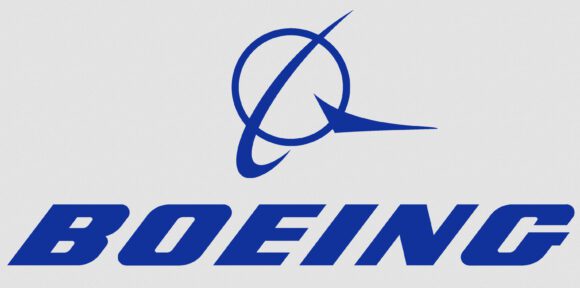JetBlue finds itself at the center of an unusual situation. It appears the airline is the first to be involved in the new world order of Airbus/Bombardier vs Boeing/Embraer. Reuters has this story. While no formal deals exist between Airbus and Bombardier or Boeing and Embraer yet, from the airline’s perspective, it has to include these relationships in its 20-year view on a fleet update.
This week the airline had a team in Mirabel to view the C Series cabin. News of the visit leaked and created a flutter in the Montreal aviation community. As Reuters points out, a visit to Brazil to see the E2 is next.
JetBlue has 60 E190s (30 owned, 30 leased), making it the world’s largest operator of the type. This represents 12% of the active E190 fleet. Consequently, JetBlue is amid a decision that carries a lot of impact for both sides in the competition.
Embraer created a winner in their E-Jet program. These aircraft took the market by storm and there are over 1,400 in service. The E190 proved to be the more popular model of their two larger models. Currently it is the E195-E2 that is the more popular of the next generation.
However, Embraer had to revisit the aircraft after Bombardier developed its C Series. Embraer’s response is the much improved E2 family, the model has many improvements including the same engines as the C Series but also a new and much-improved wing.
JetBlue wants to replace its E190s. In March 2017, FlightGlobal had an interview with Robin Hayes, the CEO at the airline. In this article, it is apparent that airline has found the E190 operating costs more than expected. In fairness, it was a launch customer for the aircraft. Embraer and GE both stepped up to improve the economics. Bloomberg has this story on the E190 and JetBlue.
It looks like the competition at the airline pits the E195-E2 against the CS100, as both aircraft offers the benefits from upgauging its fleet. The company operates many high-frequency, short-haul routes — primarily in the Northeast — that are ideally suited for a plane of that size. Some of those routes are among the company’s most profitable.
JetBlue appears, quite rightly, to be on the fence regarding its choice. By staying with Embraer, the airline faces very low pilot training costs. In addition, the E2 has much better economics and much-improved range. The E195-E2 would allow JetBlue to reduce CASM difference to A320neo from 17% (E190 vs A320ceo) to 3% (E195-E2 vs A320neo), while offering 20% COC/trip advantage. The E195-E2 is in line with the JetBlue CASM-Ex fuel program reduction with 26% lower CASM-Ex fuel and has 24 more seats.
Converting to the CS100 comes with more changes – pilot training is one of them. But the CS100 has a crucial feature, in that it has more range. It is also by now a known aircraft, with customers having worked through the launch hiccups. Avoiding being a launch customer again may be important to JetBlue. Note that the E2 achieves EIS in April and is likely to have its hiccups sorted out by the time JetBlue would take any deliveries.
What can JetBlue do with these new aircraft? For a start both allow the airline to serve markets much more effectively. For example, transcon routes are possible for markets where the A320 and A321 are too big. Moreover, JetBlue needs smaller aircraft for high frequency routes from JFK and Boston. Or the airline can use these aircraft on thick routes on off-peak hours. In short, these new aircraft offer very useful capabilities to better serve current markets and develop new ones.
As the airline works through the options, invariably the deal is going to pit Airbus and Boeing against each other (as described above). The longer JetBlue takes on the decision, the more Boeing will be drawn in as it develops its JV with Embraer. Airbus and Bombardier are well into the weeds and details on their deal. So while the campaign today is Embraer vs Bombardier, the big OEMs cast a shadow over the next 20 years.
Fortunately for Airbus, it is a well-known entity at JetBlue. Therefore, one might assume this gives the CS100 an advantage. Airbus can ensure, over its service life, that the CS100 delivers. Given the performance at SWISS, this is not a big risk for Airbus or the airline. Moreover, Delta’s choice surely provides significant confidence.
But Embraer will not lose to the CS100 without a knockdown fight. Losing JetBlue would be a painful hit. Fortunately for Embraer, their E195-E2 has the right economics. The flight test program has been remarkable in that there was no news other than “on time, on budget and better than spec”. It doesn’t get better than that. Moreover, looking farther into the future, Boeing would like an Embraer win at JetBlue.
Which brings us back to the rather enviable situation JetBlue finds itself in. It is likely getting a level of attention not seen before. While one might think time on the airline’s side, this may not be the full story. Oil prices are rising and the E190 costs are something JetBlue wants to cut. LCC competitors are creeping into markets. Moreover, JFK is JetBlue’s only hub. When Delta starts to offer CS100 service from JFK, JetBlue is one of the first airlines that will feel the impact.
The airline has some time, but not a lot. A decision before year-end is a must to ensure it is armed and ready for rising fuel costs and tougher competition.
Views: 0




